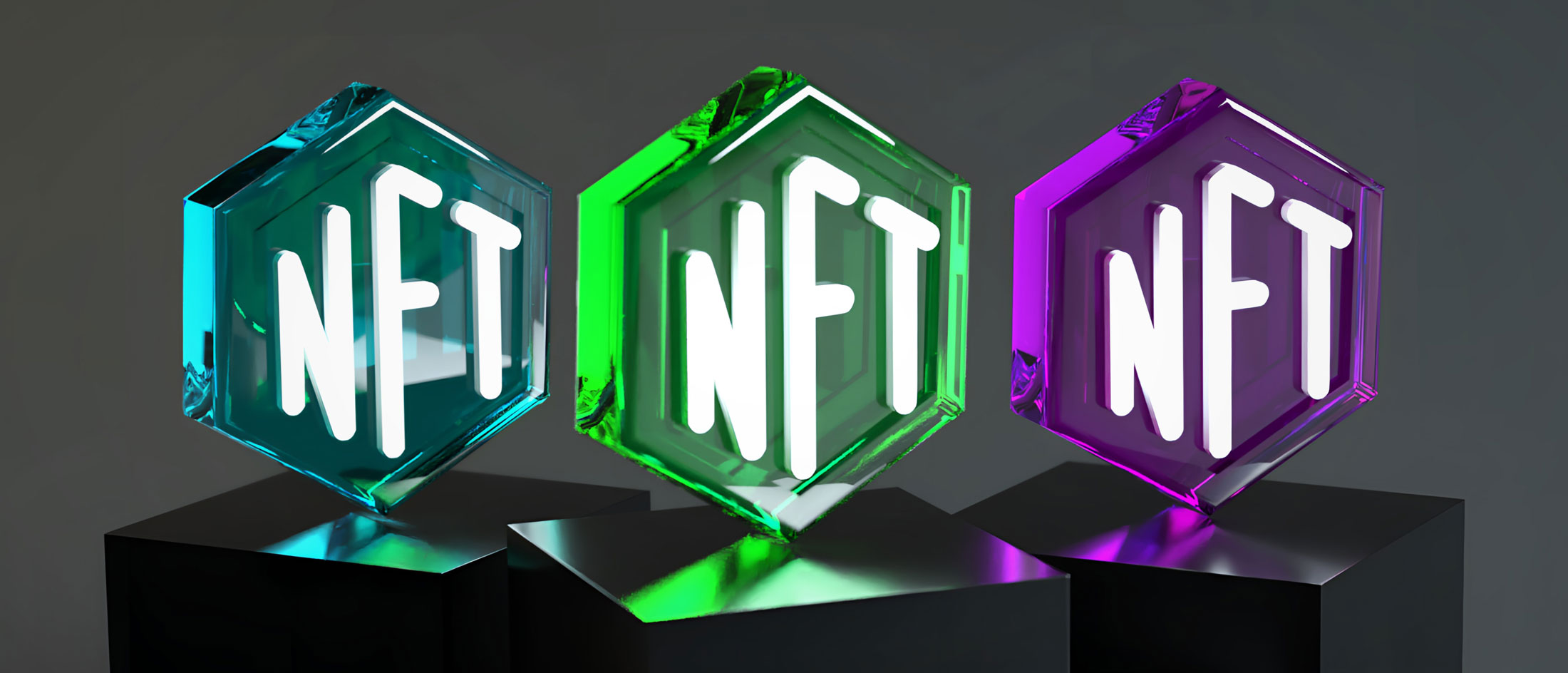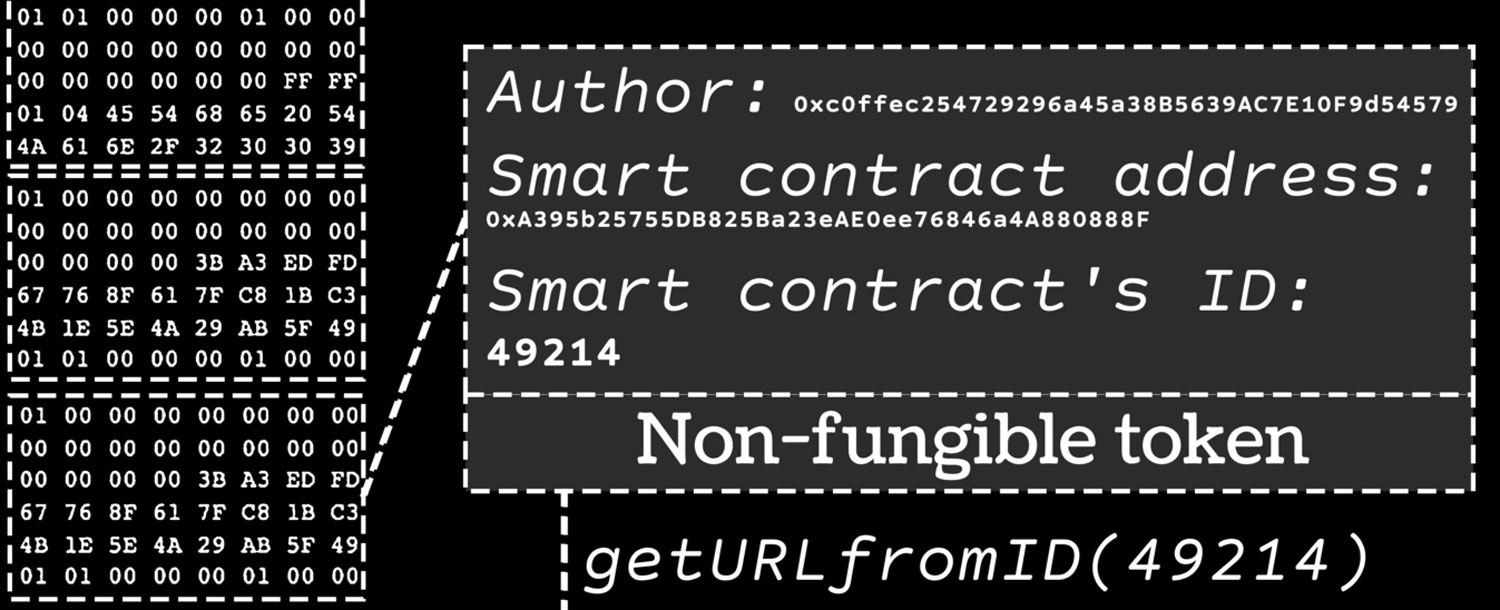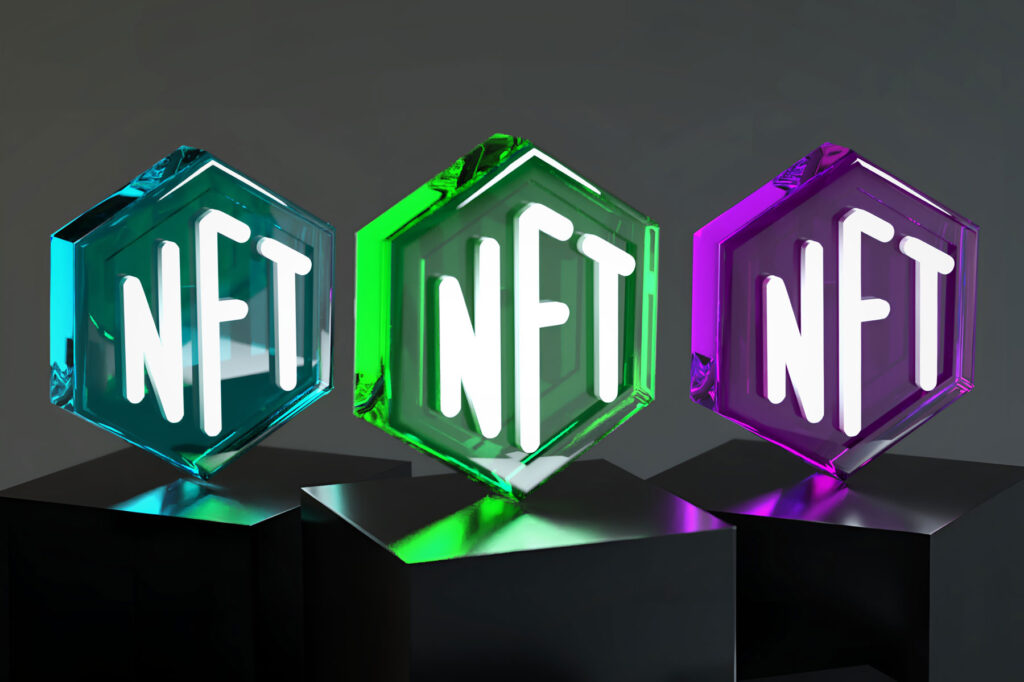
The term NFT has entered the public lexicon. Other terms are interchangeable, such as digital collectible or digital assets, but all are describing the same thing.
Whichever term is used it hasn’t taken aways from the fact that Individuals and organizations are using, testing, and experimenting with NFTs to see the different uses that can be useful and profitable.
We have put together this helpful guide of some TL;DR questions of NFTs that will help get your feet wet.
What is an NFT?
An NFT, or non-fungible token, is a type of digital asset that represents ownership or proof of authenticity of a unique item or piece of content using blockchain technology.
What we call an NFT is not an image. In fact, it doesn’t even contain the image or media file itself.
Instead, it’s a ledger that stores the transaction history of the asset (image or media file) and a pointer to the content (image or media file) of the NFT.
To put it simply, NFTs are representations of media files – like digital art – that have been given special features because of blockchain technology.
What does it mean to be non-fungible?
The term “non-fungible” refers to something that is indivisible (cannot break it down into cents like a dollar), unique and cannot be replaced.
This is in contrast to other tokens or cryptocurrencies such as Bitcoin or Ethereum, which are fungible and can be exchanged on a one-to-one basis..
Non-fungible items, on the other hand, have distinct qualities, characteristics, or attributes that make them one-of-a-kind and not easily replaceable by an identical counterpart.
So, in other words, NFTs are tokens that are one-of-a-kind, unique, and cannot be broken apart.
What does an NFT exactly do?
The primary function of an NFT is to establish a verifiable ownership record and authenticity for a particular item or media file.
This is achieved through the decentralized nature of blockchain technology, which ensures that the ownership information is transparent, tamper-proof, and cannot be forged.

What type of NFTs are there?
NFTs can uniquely represent a number of pieces of media. The media can be anything digital, including art, videos, music, gifs, games, text, memes, books, tickets, and code.
What is an example of an NFT?
The start of the NFT adoption (but surely not the end) has taken off around digital art collectibles.
There are thousands of these, but the most famous is the CryptoPunk collection by larva labs.
What are NFTs used for?
One of the advantageous things about NFTs is they take away the middleman and allow creators from a wide, wide circle to be able to sell their works directly and capture more value.
Although the starting point for NFTs have been digital collectibles, in the future look for NFTs to be widely used in many different industries – real estate, law, sports, etc.
NFTs can be used as tickets, gaming tokens, music and media tokens, or utilities & security.
Why would someone buy an NFT?
There are various motivations behind investors purchasing NFTs.
For some, the allure lies in owning the original asset itself, while others recognize the value associated with tokenizing the asset as an NFT.
Additionally, certain investors view NFTs as an opportunity to deepen their understanding of blockchain technology.
Can others use my NFT?
It’s important to note that while NFTs can have significant value and have generated substantial amounts of money, owning an NFT does not necessarily grant exclusive usage rights to the underlying content.
The actual content can often be freely viewed or accessed by anyone, but the NFT owner possesses the verifiable proof of ownership and the potential for value appreciation in the marketplace.

What is NFT metadata?
Metadata is all of the additional descriptions about what the NFT is. For example, think about the additional metadata descriptions you would put on a house: the address, color, size, number of bedrooms etc.
Some of the most common metadata descriptions applied to NFTs are: Title, description of the NFT, creator, date created, rarity, royalties, and history.
Why is metadata important with NFTs?
Metadata contains information about the unique attributes, provenance, and ownership history of an NFT. This information establishes verifiable ownership and ensures the authenticity of the digital asset.
Where is my NFT stored?
This is an important question that is not asked often enough. Unfortunately, many NFTs are stored on the creator’s personal cloud account such as google drive or dropbox. The best place to have the media files is undoubtable a decentralized network that does not rely on the creator to keep up the payment and stewardship of the file. A blockchain network like Arweave through ArDrive gives the buyer and seller the peace of mind that the digital asset will last and maintain its value.
